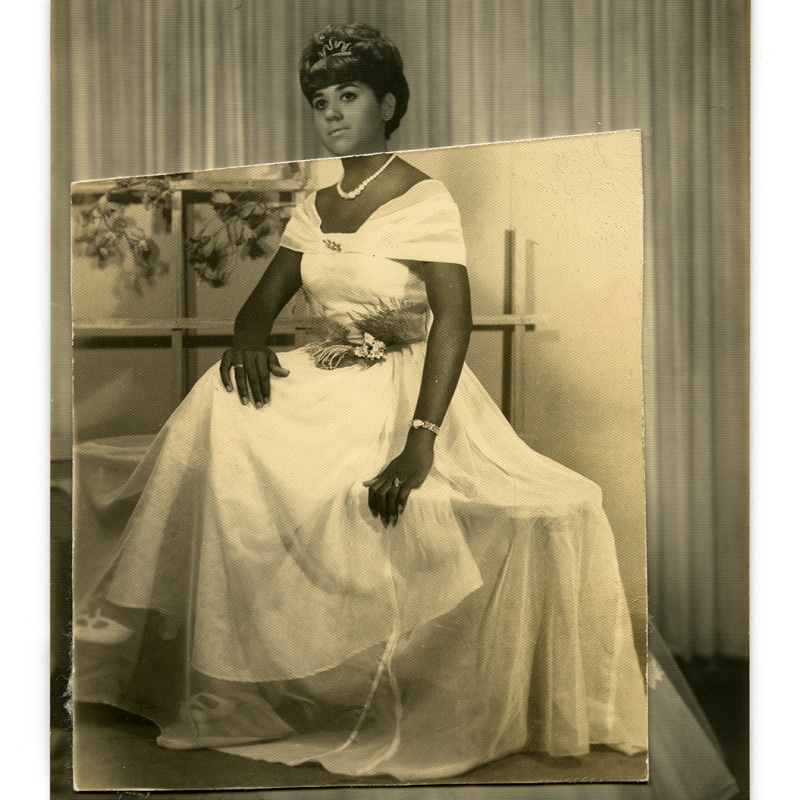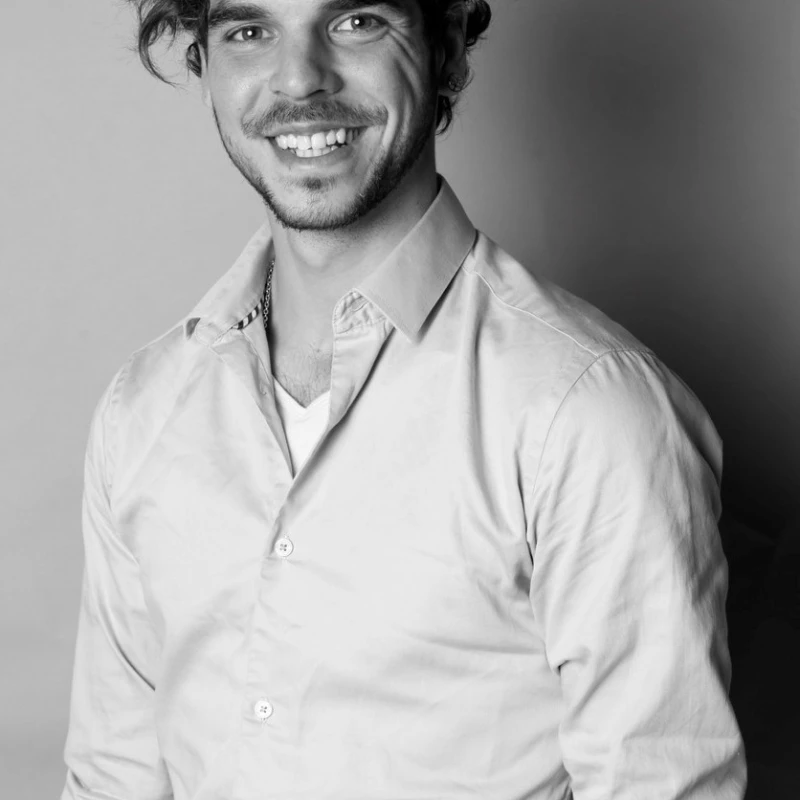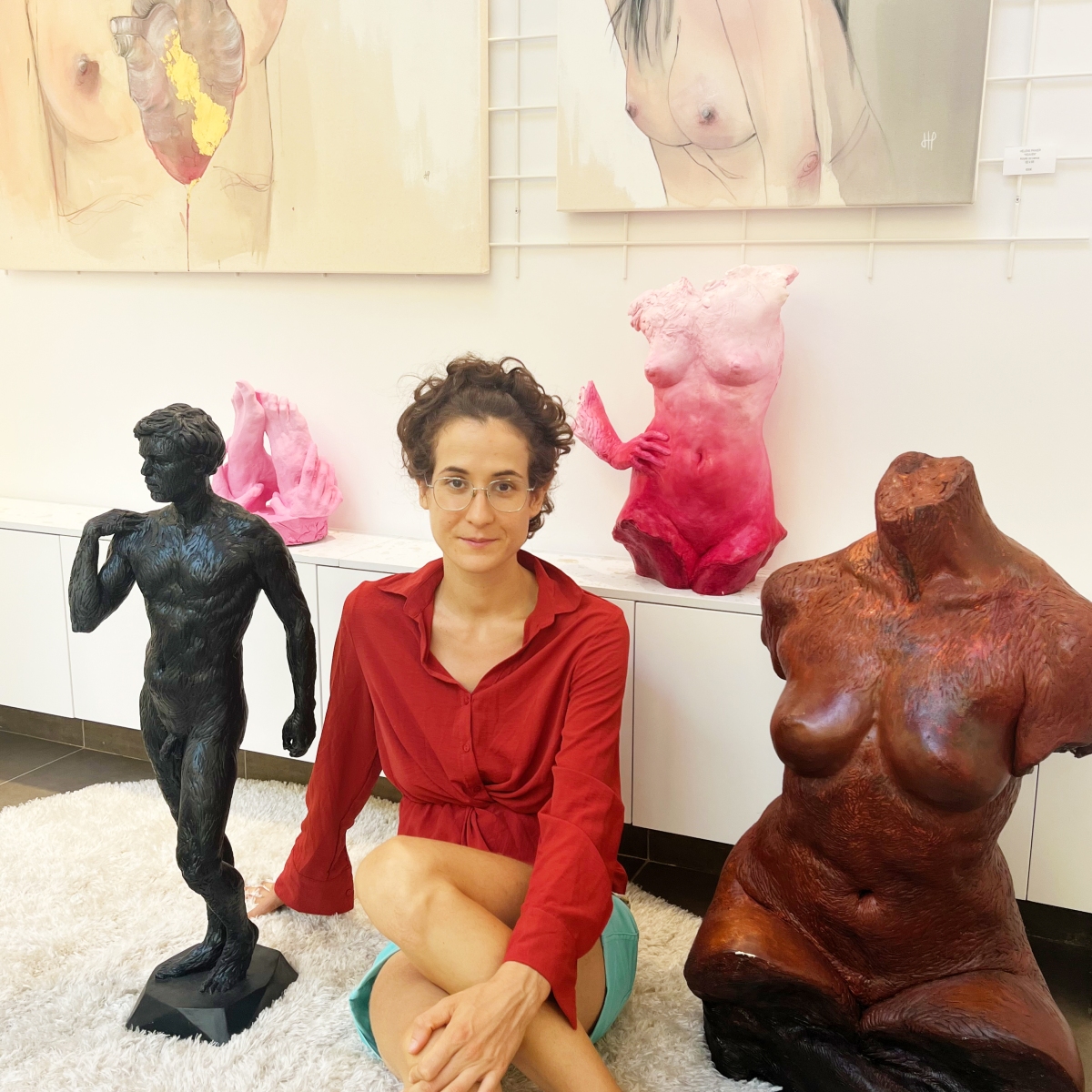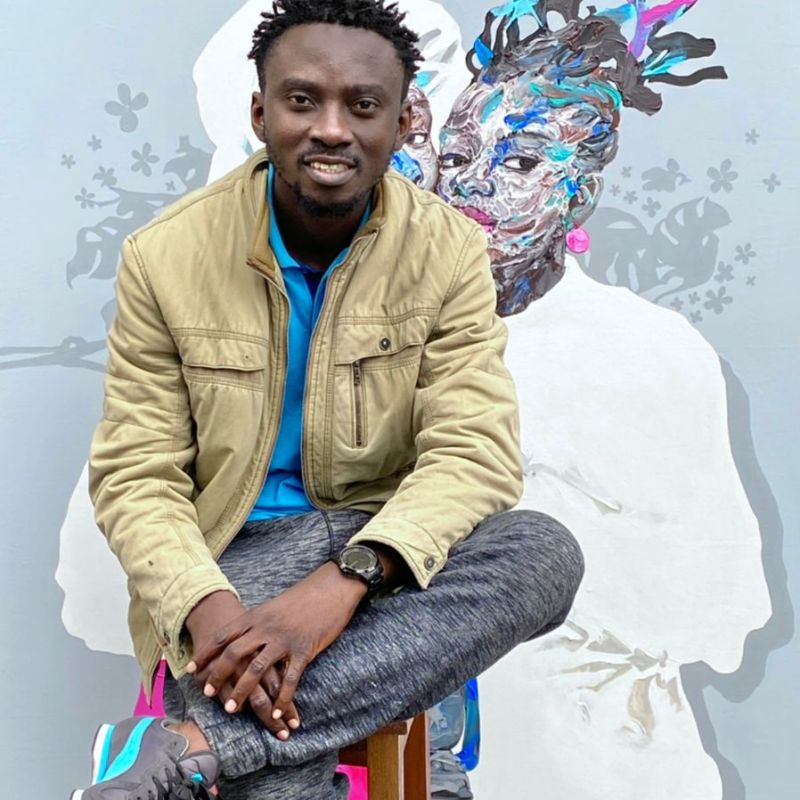Through her abstract paintings, New York based artist Debbi Kenote communicates her inner moods and thoughts on surfaces that challenge the traditional rectangular canvas. At the moment, Debbi works on a series based on stars that brings together the artist’s microcosmic and macrocosmic musings on what it means to be alive today, researching human histories and astronomical stars through vivid colours, starry canvases and the stories and forms of quilting blocks.
In our interview with Debbi, we spoke about her obsession with abstraction, the importance of the lens in the creative act and the fertile place for play that she has found in painting. Enjoy!
By Nina Seidel
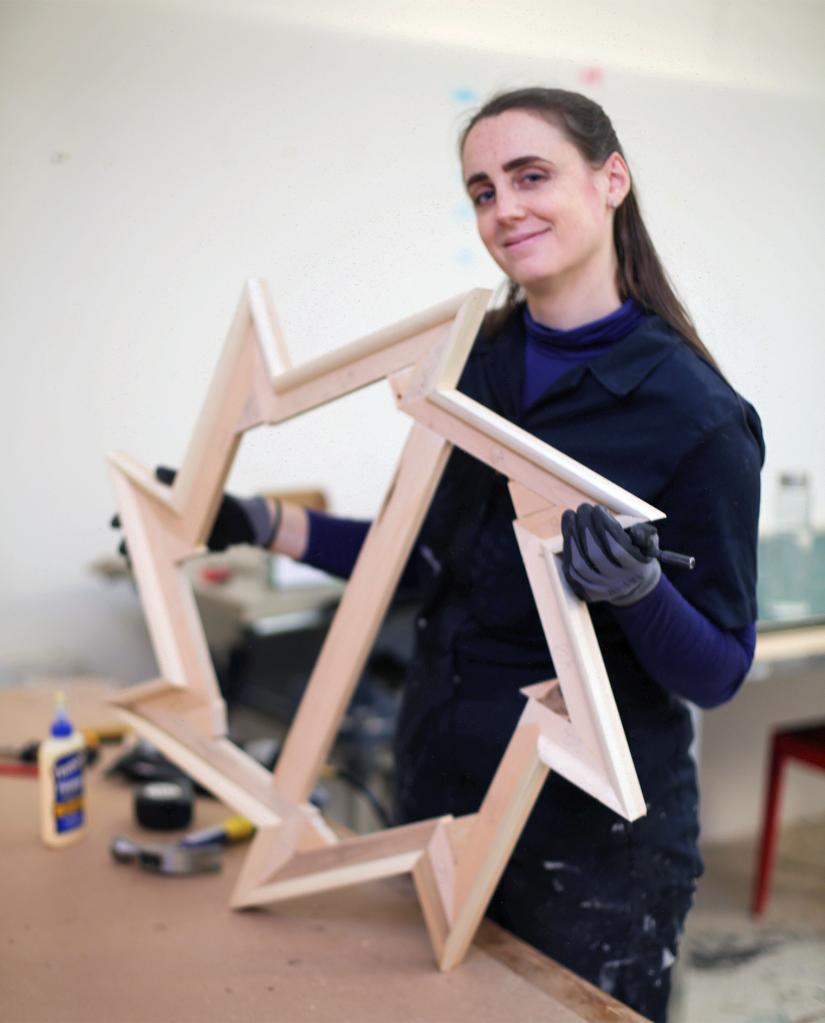
***
Hello Debbi, thank you for taking the time to answer my questions. For those who don’t know you: please shortly present yourself and tell us how you got into art in the first place, especially painting.
I grew up in the Pacific Northwest region of the U.S., very close to the Canadian border. I come from a family of makers and farmers, so I saw a lot of hands-on crafting. There was always a project in motion, things like sewing, drawing, cooking, and building. From an early age, I knew I wanted to be an artist, although I didn’t know what that meant. I saw a lot of craft and local art, and I was very interested in it. The closest art museums to us were about an hour and a half away, either North to Vancouver, BC, or South to Seattle, WA. I visited my first art museum when I was 18 and traveled to Paris. I was part of a group of high school students and we fundraised to make the trip happen. We went to the Louvre and Musée d’Orsay and I was blown away. Later on, while studying art at University, I visited the closer Museums regularly.
I became serious about art in high school, with the help of a great teacher. When I applied for undergrad it seemed like a practical choice to study design. I quickly realized that I needed to be working physically with materials, and transferred to the art department after being accepted. I loved studying art. I went to Western Washington University and it had some outstanding faculty that challenged my craft and concepts. I was mostly working in painting and installation. After my BA, I continued for an additional post-baccalaureate BFA program, and while there I applied for an MFA in Sculpture at Brooklyn College. I wanted to learn more about working in three dimensions, and I also wanted to experience living and working in a vibrant art community. I moved to New York City to attend Brooklyn College in 2014. I worked primarily in sculpture and installation there, but I was always thinking about painting. When I graduated in 2016, I decided to return to painting. I wanted to incorporate some of the physical elements I had explored in Grad School. This is when I started experimenting with shaped paintings, which eventually led me to the work I’m making today.

Acrylic, dye and hindges on canvas, 48 x 56
Your paintings are abstract- what fascinates you about abstraction and what does it offer you from an artistic point of view? Have you always painted abstractly?
I used to think that I became interested in abstraction when I went to study art at the University, but when I look back now, I can see that it started when I was a kid. I remember drawing a lot of ribbon shapes and building forts and non-functional structures in the woods surrounding my parent’s farm. When I went to high school, I started working with the figure and landscapes. This continued until halfway through my undergraduate degree. When working representationally, I always felt that I had more to say than what the picture I was painting allowed. I would offer the metaphor of a poet writing short stories and feeling like something was missing. I’m interested in working with negative space, something that poetry also actively uses.
Today I’m obsessed with non-objective painting, both from a craft and conceptual perspective. I often feel like I’m writing poems with shapes and paint. I still reference things from the natural world, including forms distilled from the figure and landscape. I like to think about body language and spatial communication in general. Working abstractly allows me to approach each composition intuitively. I spend a lot of time editing and pairing down.
Each painting feels like a puzzle I’m slowly putting together.
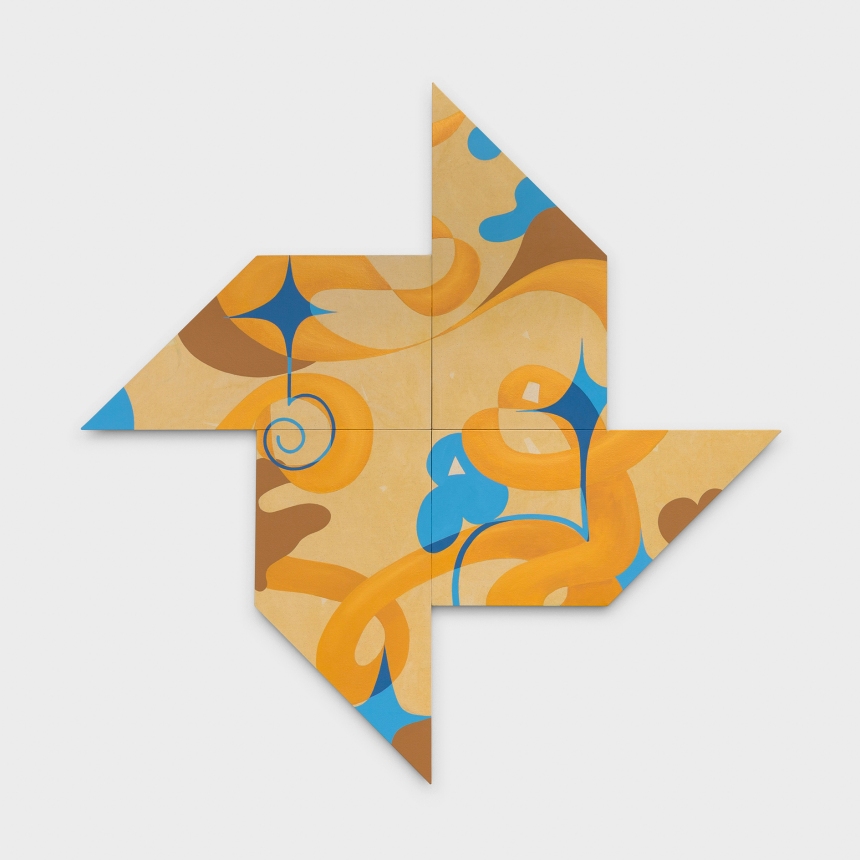
Acrylic on dyed canvas, 60 x 60

Acrylic on dyed canvas, 47 x 47 inches
I read that you communicate your inner moods and thoughts through your paintings. Could you put into words how painting makes you feel?
I’m currently reading Rick Rubin’s book The Creative Act. He writes about how art is more about the lens we see through than the subject we’re working with. As an example, multiple artists may paint the same landscape, but it’s the view through their particular lens that separates their art from others. I think that’s what I mean when I’ve written before about inner moods and thoughts. Many aspects of how I paint, including colors I’m drawn to and shapes I conjure, reveal things about myself. Some things are more tangible, for example with this body of work I’ve been interested in quilting blocks, and I grew up looking at quilts, so it’s a direct interest tied to my history and identity. Other things can be more fluid, like a particular brushstroke that channels an emotion I felt the day I painted it. I often think of graphologists, or people who study handwriting for a living. The study of handwriting can reveal personality traits and emotional states and can also be used to authenticate a signature. Painting is incredibly difficult and exciting. I feel challenged mentally and physically when I’m working.
I don’t paint every hour of every day, but every second of my lived experience enters the studio with me when I sit down to paint. It’s through the act of editing and meditating that I translate them onto canvas.

Acrylic on dyed canvas 60 x 60
Do you like Suboart Magazine? Subscribe to our email list to receive monthly news on opportunities, interviews & features.
Discover more emerging artists
Read interviews with artists from all around the globe
Let’s be friends on Instagram



